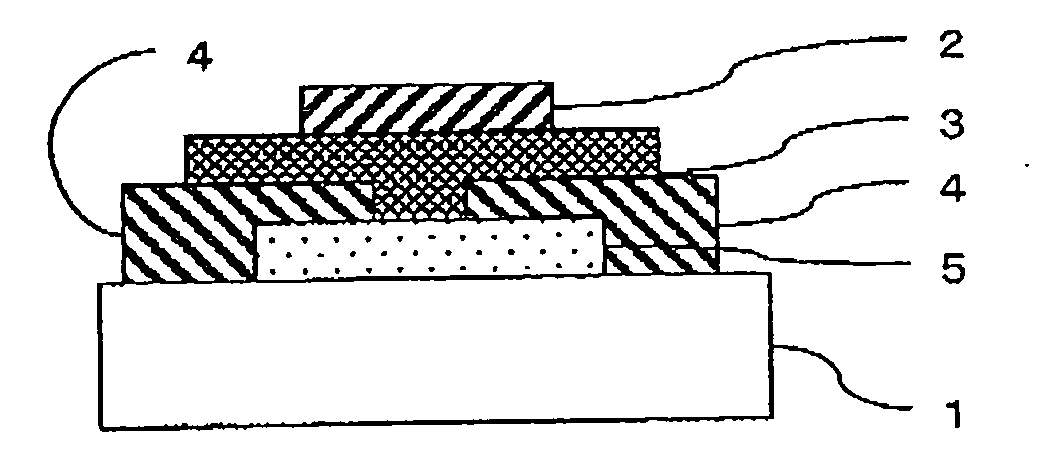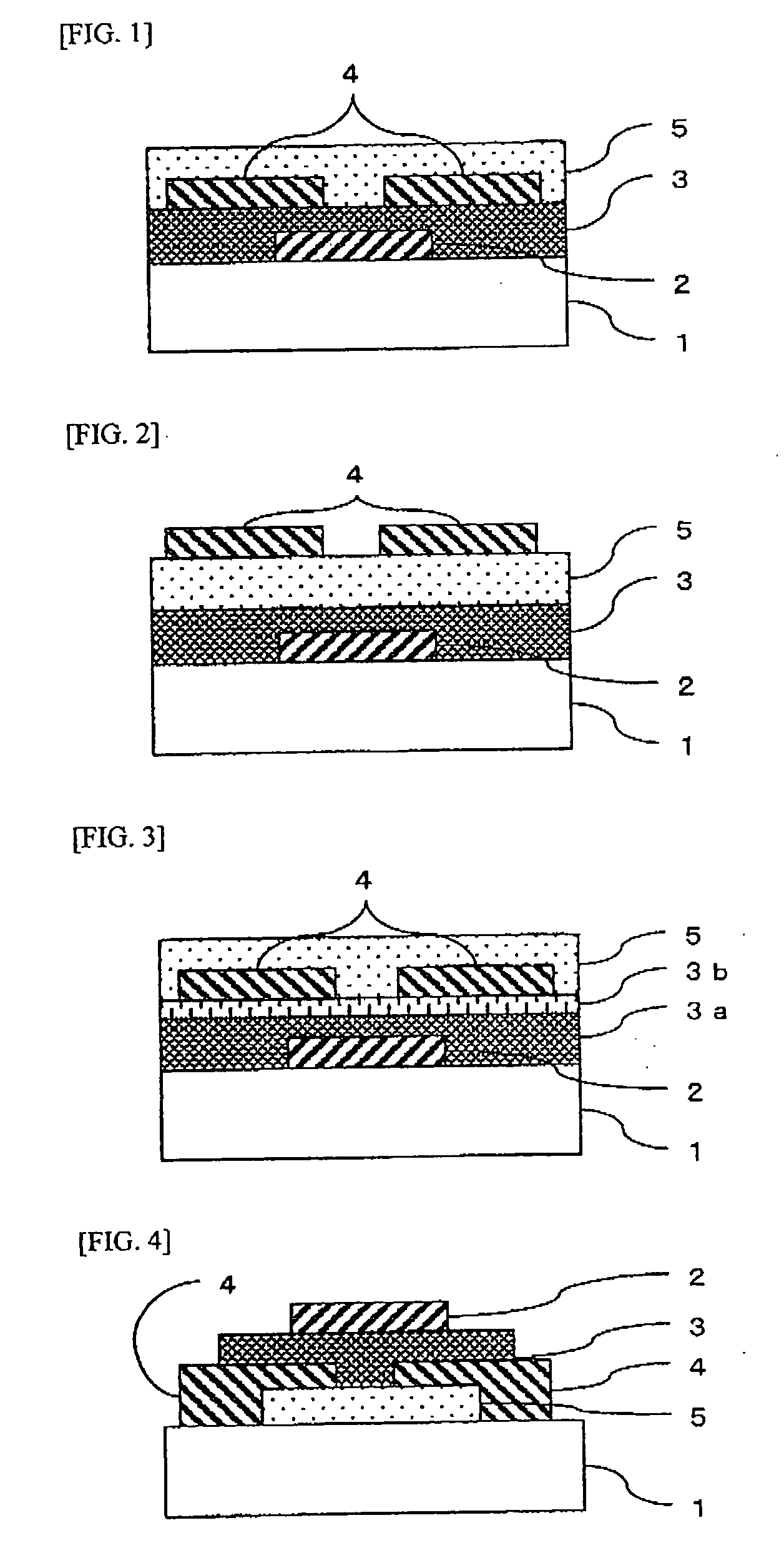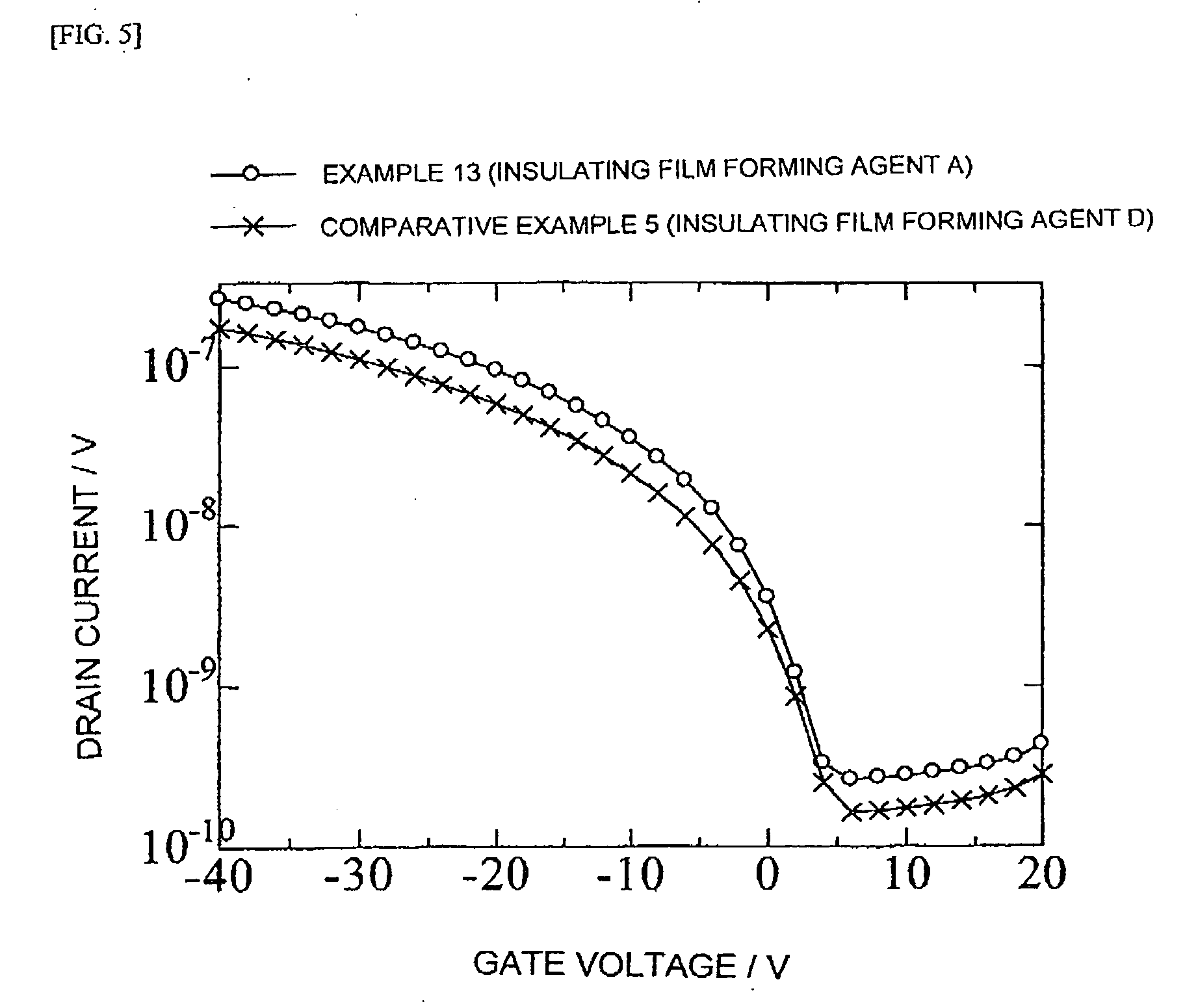Gate insulating film forming agent for thin-film transistor
a technology of insulating film and transistor, which is applied in the direction of thermoelectric devices, sustainable manufacturing/processing, and final product manufacturing, etc., can solve the problems of low heat resistance properties, significant influence of thermal expansion, and difficulty in using the method of producing electric paper or the like, etc., to achieve easy adjustment of solid concentration, easy soluble, and high solvent solubility
- Summary
- Abstract
- Description
- Claims
- Application Information
AI Technical Summary
Benefits of technology
Problems solved by technology
Method used
Image
Examples
synthesis example 1
P-1]
[0127]40 g of monoallyldiglycidyl isocyanuric acid, 24.4 g of monoallyl isocyanuric acid, and 1.6 g of benzyltriethylammonium chloride were put into 258 g of cyclohexanone, and the resultant mixture was heated to 120° C. and stirred for 8 hours with simultaneously introducing nitrogen into the mixture. Subsequently, the resultant reaction solution was dropped into a methanol solvent, and a reaction product P-1 (white powder) was produced by filtering the precipitate separated out.
[0128]The GPC analysis of the reaction product P-1 was performed and found that the weight average molecular weight as converted into standard polystyrene was 9,900.
[0129]The reaction product P-1 contains a compound having a structural unit represented by the following formula (11):
synthesis example 2
Synthesis of P-2]
[0130]15 g of monoallyldiglycidyl isocyanuric acid, 11.2 g of monoallyl isocyanuric acid, and 0.8 g of benzyltriethylammonium chloride were put into 61.1 g of cyclohexanone, and the resultant mixture was heated to 120° C. and stirred for 12 hours with simultaneously introducing nitrogen into the mixture. Subsequently, the resultant reaction solution was dropped into the mixed solvent of diethylether and methanol, and an intermediate product (white powder) was produced by filtering the deposited precipitate. The GPC analysis of the intermediate product was performed and found that the weight average molecular weight as converted into standard polystyrene was 6,400.
[0131]Next, 4.3 g of a diallyl monoglycidyl isocyanurie acid, 0.1 g of benzyltriethylammonium chloride, and 31.1 g of cyclohexanone were added to 9 g of the thus produced intermediate product (white powder), and the resultant mixture was heated to 120° C. and stirred for 8 hours. Subsequently, the resultant...
synthesis example 3
Synthesis of P-3]
[0134]20 g of monoallyldiglycidyl isocyanuric acid, 13.4 g of monobutyl isocyanuric acid, and 0.8 g of benzyltriethylammonium chloride were put into 111 g of propylene glycol monomethylether, and the resultant mixture was heated under reflux and stirred for 15 hours with simultaneously introducing nitrogen into the mixture. Next, the resultant reaction solution was dropped into a methanol solvent, and a reaction product P-3 (white powder) was produced by filtering the precipitate separated out.
[0135]The GPC analysis of the reaction product P-3 was performed and found that the weight average molecular weight as converted into standard polystyrene was 10,700.
[0136]The reaction product P-3 contains a compound having a structural unit represented by the following formula (13)
PUM
| Property | Measurement | Unit |
|---|---|---|
| temperature | aaaaa | aaaaa |
| temperature | aaaaa | aaaaa |
| temperature | aaaaa | aaaaa |
Abstract
Description
Claims
Application Information
 Login to View More
Login to View More - R&D
- Intellectual Property
- Life Sciences
- Materials
- Tech Scout
- Unparalleled Data Quality
- Higher Quality Content
- 60% Fewer Hallucinations
Browse by: Latest US Patents, China's latest patents, Technical Efficacy Thesaurus, Application Domain, Technology Topic, Popular Technical Reports.
© 2025 PatSnap. All rights reserved.Legal|Privacy policy|Modern Slavery Act Transparency Statement|Sitemap|About US| Contact US: help@patsnap.com



